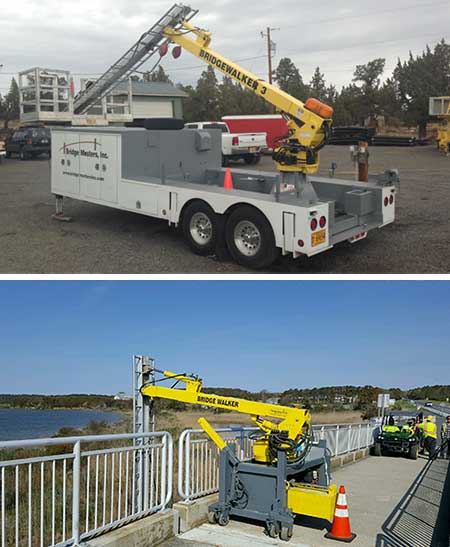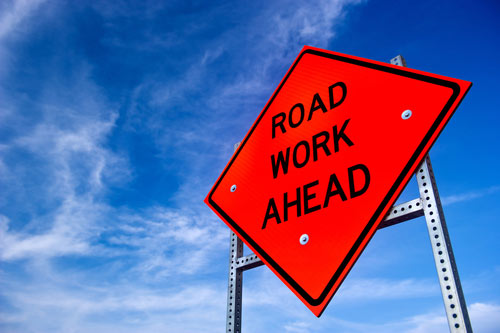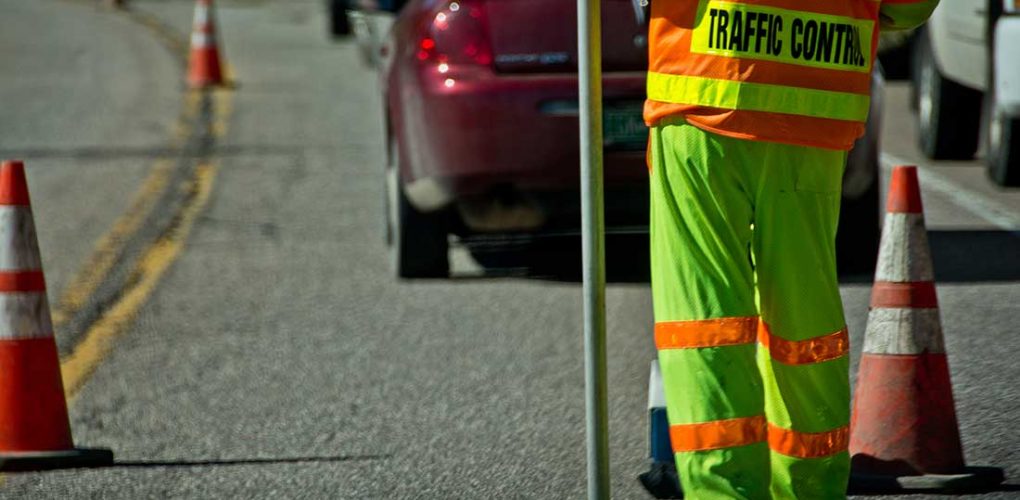One thing almost everyone agrees on: America’s infrastructure needs fixing.
Another thing most people agree on: No one enjoys the traffic congestion that results from bridge, road, and utility construction work.
Traffic snarls have a huge impact on the people who live in and travel through affected areas:
- Delays make people late for school, work, appointments, and other important everyday activities.
- Businesses suffer when clients and customers find it hard to access them. (Many people try out new providers when they can’t conveniently reach their regular ones. It’s a leading cause of lost business.)
- Everyday emergencies turn critical when ambulances, rescue crews, and fire trucks aren’t able to travel regular routes.
In this article, we’ll share tips, hints, and best practices on how to avoid having construction work impact traffic and life in surrounding communities.
Post warnings ahead of time

One of the biggest errors bridge, road, and utility construction crews make that leads to traffic delays, especially early in projects, is forgetting to share information prior to projects beginning. Warning commuters before construction happens gives them an opportunity to find alternate routes to their destinations. Most people are happy to change their routines if it keeps them from experiencing traffic tie-ups.
Think outside the box: Road signs aren’t the only way to warn locals about upcoming bridge, road, and utility work. Contact local media about potential traffic issues. Most news programs and websites are happy to share this type of information as a public service. Also think about doing simple things like posting notices at coffee shops, stores, and libraries.
In addition, implement highly targeted social media campaigns. This is a cost-effective way to reach local audiences. An added bonus: People will share your notices with their social networks at no cost to you.
Warning: Don’t start issuing warnings about upcoming construction projects too soon. People will tune them out when they don’t see work beginning for a long time. A week or two prior to the start date is a good benchmark.
Leverage the ABCs
Accelerated Bridge Construction (ABC) reduces traffic tie-ups by significantly cutting construction time. Using the latest techniques can reduce it from months and years down to weeks and even days.
There are three types of accelerated bridge building methods:
- Prefabricated Bridge Elements and Systems (PBES). This technique uses bridge components built offsite at factories or warehouses to speed construction and reduce impact to the surrounding area.
- Slide-In Bridge Construction. A bridge is built offsite and delivered to its final location or it is constructed next to an actual bridge site. The finished structure is slid into place and connected to local roads and utility infrastructure. With this method, less work done onsite means less impact on local traffic.
- Geosynthetic Reinforced Soil-Integrated Bridge System (GRS-IBS). Highly compacted reinforced soil is leveraged to provide extremely secure and efficient foundations for smaller bridges.
Think outside the box: Not all bridges are candidates for the full-on accelerated construction process. However, most can benefit from some of the related techniques to reduce time to completion. Think about doing things like manufacturing some components offsite or using a parallel development timetable to move things along more quickly.
Need help? If you’re not sure how to leverage accelerate bridge construction methods on your projects, an expert in bridge construction can point you in the right direction.
Use the right equipment

One of the biggest contributors to traffic congestion on bridge, road, and utility construction sites: clunky and cumbersome equipment blocking — or pulling in and out of — traffic. Using the latest, streamlined vehicles can help reduce the impact on work locations and traffic. Some options include:
- Bridgewalkers
- Hydra Platforms
- Paxton-Mitchel Snoopers
- Bridge Masters UBITs
Think outside the box: Equipment like the Bridgewalker Type I has an extremely small footprint (less than three square feet), yet is able to raise and lower workers more than 12 feet.
Tip: A bridge construction equipment expert can help you determine which options are best for your work sites.
Leverage flexible scheduling
Is it absolutely necessary that your team work during standard business hours? Do you have to work during summer vacation travel periods? Or is it possible to use creative scheduling to work at times when traffic is lighter and road work will have less of an impact? Consider things like:
- Limiting the work you do during peak commuter rush times
- Changing shifts when traffic is heaviest
- Working at night when fewer people are on the roads
- Moving more of the work to the spring and fall when fewer summer vacationers are on the road.
Think outside the box: Local municipalities, chambers of commerce, and businesses could partner with you on alternative work schedules. See if they’re willing to contribute additional project dollars to pay people to work off-peak if it prevents a reduction in business.
Tip: Make sure contracts clearly define when your team can work on road, bridge, or utility sites. Double check they give you flexibility to adjust schedules to reduce traffic impact.
Improve signage

Have you been using the same signs and set-ups on work sites for a long time? Are you sure they make it clear to drivers exactly what they’re supposed to do as they approach and enter work zones? One of the leading causes of traffic snarls is a lack of direction or clarity, forcing drivers to jockey for position at the last minute. (It’s also a big cause of construction site accidents.)
Think outside the box: Take a fresh look at your signage plans, both virtually during the planning process and in real life once they’re set up. It will provide an opportunity to identify gaps and make improvements.
Idea: Once work is underway on a construction site, drive through it with friends or family members who aren’t familiar with it. Ask them to point out places where signage and directions aren’t clear.
Leverage utility installation experts
Traffic tie-ups don’t only happen because of construction on bridge and roadway surfaces. They also occur because of utility work taking place under bridges. In fact, utility installations can impact traffic on bridges and on the roads below them. Installing pipes, wiring, hanging brackets, and protective utility covers under bridges can be time consuming, closing lanes of traffic for weeks at a time. Even worse, this type of installation work isn’t limited to certain areas. It moves around frequently, causing confusion for drivers.
The good news: Careful planning and using the most modern under-bridge utility construction techniques can almost completely eliminate traffic issues.
Think outside the box: Do you really have to do it all yourself? Many contractors and utility companies install utility infrastructure under bridges using their own people and resources. However, with something as specialized as this, it makes sense to turn to an expert in doing this kind of work. They can expedite the project, limiting traffic impact by:
- fabricating custom, easy-to-install, utility-hanging systems offsite.
- providing experienced professionals to do the work quickly and efficiently.
- planning the installation so it limits impact on local roads and communities.
- offering advice on how to avoid traffic problems.
Caution: It’s worth doing your homework to make sure you entrust your job to an experienced utility installation firm. Many claim to be able to do this kind of work, but don’t have a proven track record of successful under-bridge utility installations. Always ask for a list of completed projects and double check references associated with them. Ask questions about what the company has done to keep traffic flowing around construction zones.
Provide training
Most construction workers aren’t experienced in traffic control. Even those who are may not be aware of traffic patterns around new work zones. Schedule time during team meetings to provide traffic-related training for current and new job sites. Offer tips on how to work effectively to avoid creating traffic tie-ups and accidents. While you’re at it, include ideas on how employees can stay safe while working in or near traffic.
Think outside the box: Conduct a brainstorming session asking your workers to share their best practices about working around traffic. One of the best ways to get people to adapt new ideas is to involve them in the development. They’ll appreciate the sense of ownership it provides.
Smart move: Use visuals, including maps, photos, and videos, when conducting traffic-control training. This is definitely a situation where a picture is worth a thousand words.
Conclusion
It seems more and more likely that Congress will allocate budget dollars to start repairing America’s decaying infrastructure. It’s the perfect time for municipalities, designers, engineers, and contractors to start planning how to minimize traffic impact when big road, bridge, and utility projects start.

